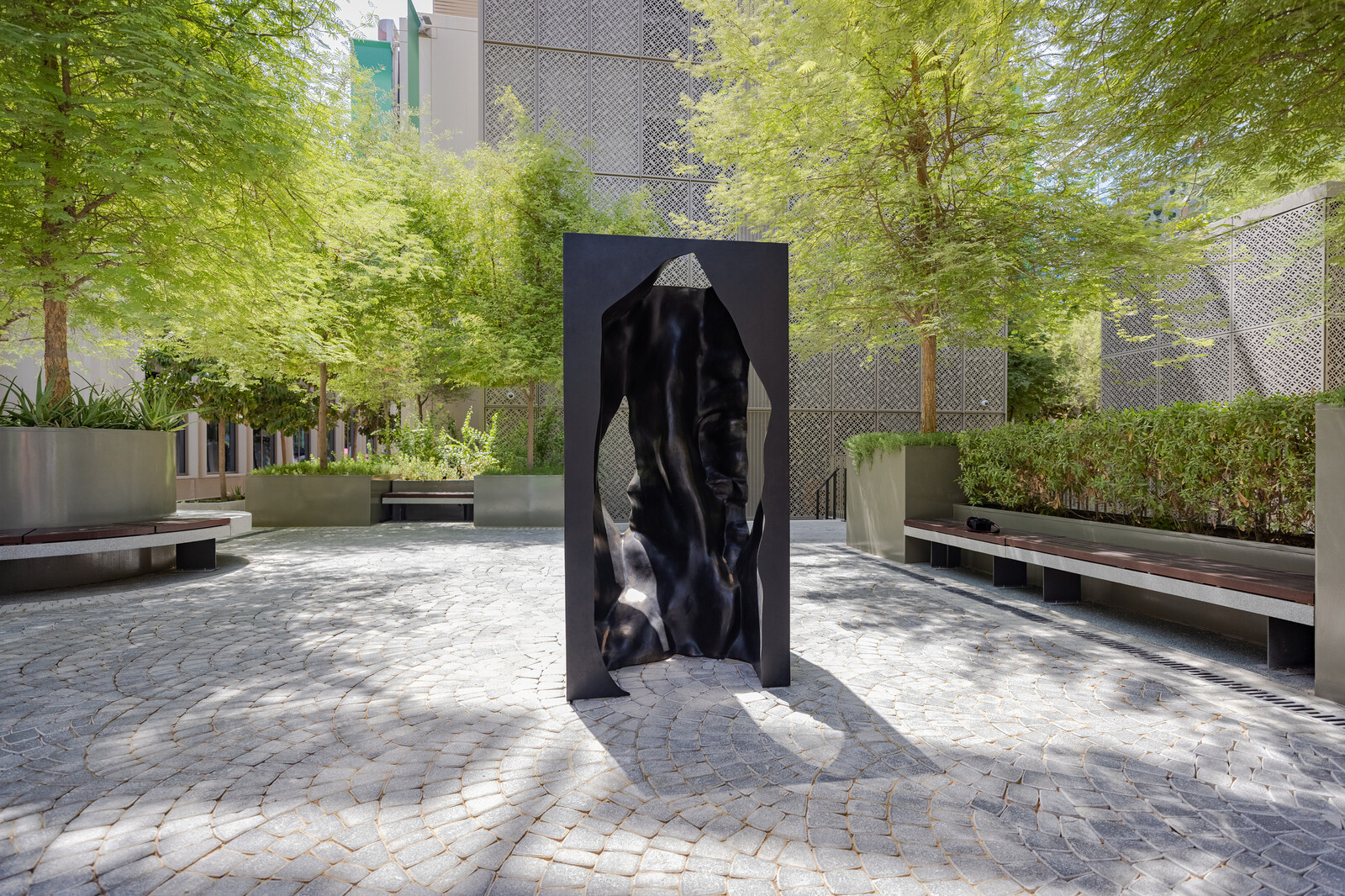October 1, 2021–March 31, 2022
The first world fair to be held in the Middle East, Expo 2020 Dubai opened its doors on October 1, 2021. For the first time, the global event features a strong engagement with contemporary art in public spaces. The Public Art Programme of Expo 2020 Dubai presents artworks by Hamra Abbas, Afra Al Dhaheri, Shaikha Al Mazrou, Monira Al Qadiri, Abdullah Al Saadi, Asma Belhamar, Olafur Eliasson, Nadia Kaabi-Linke, Khalil Rabah, Yinka Shonibare, and Haegue Yang.
The programme is inspired by the Book of Optics written in the 11th century CE by Arab scholar Ibn Al Haytham, and provides a context that allows an exploration of its philosophical aspects and theories on visual perception, including definitions of vision, recognition, and the impossibility of envisioning a full picture of reality within oneself without the power of imagination. Recalling Ibn Al Haytham today helps us understand phenomena and the relation between the imagined and the perceived, and to explore the common among humans while understanding cultural particulars. It also invites us to think about the universe, to look at the sky, the planets and the stars.
This cosmic-cultural thread is crucial to the programme. As audiences tour the Mobility District within the Expo 2020 Dubai site, they will encounter Nadia Kaabi-Linke’s floor sculpture, which depicts the revolving shadows of an invisible bicycle over the course of one day, with the shadows cast by the sun and the moon calculated precisely on-site. Next comes Haegue Yang’s grand sonic planetary model which alludes to Ibn Al Haytham’s work on perception and explores the metaphorical and physical potential of bells. Khalil Rabah’s sculpture references an 11th century CE instrument that measures latitude without calculation tables, using only sunlight and three objects. Rabah deconstructs the tool and enlarges its elements to create a playful arena with an engraved diagram indicating the latitude of the Expo 2020 site.
In the Sustainability District, Shaikha Al Mazrou’s sculpture conceptually and formally references plinths, and its form allows commissioning other artists to create future works to be exhibited in relation to it. Not far-off, audiences will come across an iconic work by Olafur Eliasson, a bronze sculpture cast from a now-vanished glacial ice block from Greenland that was formed over millions of years.
Associate curators Muneera Al Sayegh and Mohammed Al Olama worked on a conceptual thread that explores the role of monuments in the local landscape and their connection with memory, architecture and nature with artists Afra Al Dhaheri and Asma Belhamar. Al Dhaheri’s work is a large-scale marble sculpture inspired by traditional Emirati floor pillows, and revisits childhood moments of impromptu play. Belhamar’s sculpture explores the visual distortion experienced when commuting from mountainscapes into cityscapes, where the change from landscape to architecture and from topography to iconography feels like a journey through shifting scales and times.
Moving along into the park, one encounters Hamra Abbas’ floor sculpture, where the imagery at work plays on the aesthetics of the desire for a blissful paradisiacal land. The work uses the traditional marble and stone inlay technique from Lahore and examines the symbolic significance of garden images in relation to architecture.
Yinka Shonibare’s work manifests as a large three-dimensional fabric that appears to be moving in reaction to the wind. The fabric portrayed in his work has a complicated history, in terms of its origin and its movement along trade routes.
Finally, Abdullah Al Saadi’s map-like paintings on stones collected on his journey in the Wadi Al Tayybah region are organized around a seating area according to his own symbolic code.
A publication titled “On the Book of Sceneries” co-edited by Ala Younis and Tarek Abou El Fetouh will be launched in early 2022. Contributors include Homi K. Bhabha, Kwame Anthony Appiah, Taneli Kukkonen, Sultan Sooud Al-Qassemi, Abdel Khaleq Abduallah, Stephanie Bailey, Danwen Xing and Ahmad Makia. The publication is designed by HOUSE and will be co-published with Hatje Cantz.
Curated by Tarek Abou El Fetouh.
For media enquiries, please contact:
Press Office
On-call contact, press.office [at] expo2020.ae / T +971 56 688 9509
P.O. Box 2020, Dubai, UAE




